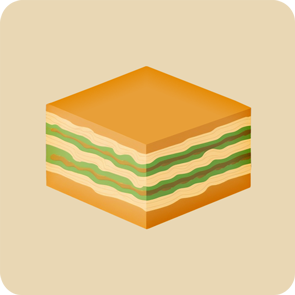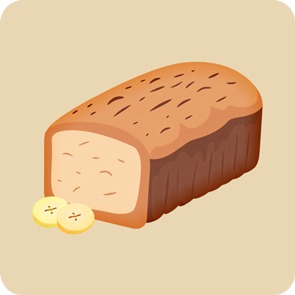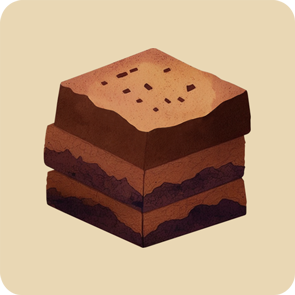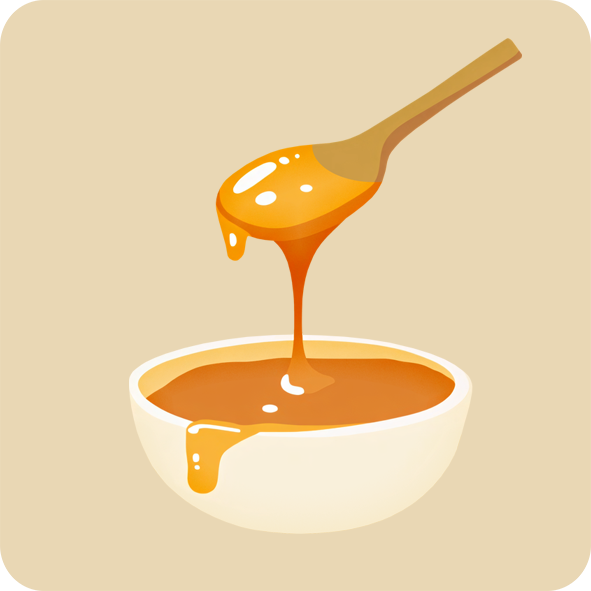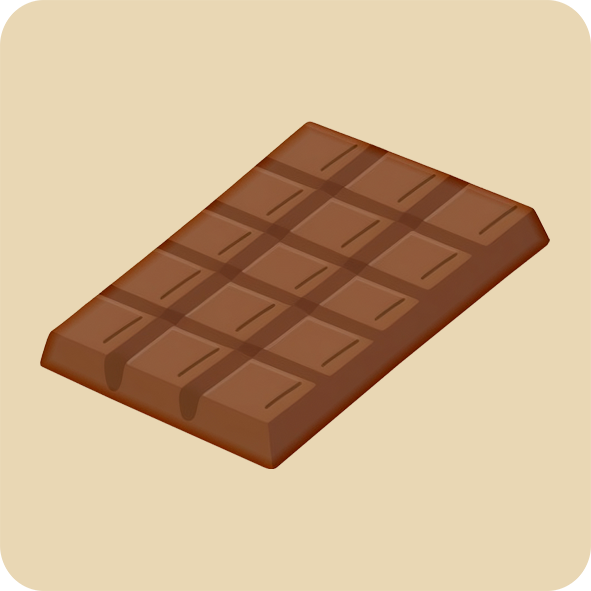
Milkshake

Meringue

Milk Chocolate
Milk chocolate is a sweet, creamy treat made by combining cocoa solids, milk, and sugar. It's softer and sweeter than dark chocolate, making it popular in candy bars and desserts.
135
1 medium square
(150 grams – 4.5 x 3.5 cm / 1.8 x 1.5″)
CAL
E
Nutri-Score
Rich in sugar and fat, lacks significant nutritional value beyond small amounts of calcium and antioxidants.
Value per 100 grams & per cup (150g):
535 kcal | 800 kcal
Protein
8 grams | 12 grams
Fats
30 grams | 45 grams
Carbohydrates
58 grams | 87 grams
Fiber
3 grams | 4.5 grams
Vitamins & Nutrients
- Calcium: Supports bone strength and nerve function.
- Iron: Helps transport oxygen in the blood.
- Magnesium: Important for muscle and nerve health.
- Antioxidants (Flavonoids): Help combat oxidative stress.
Satiety and Feelings
Milk chocolate can bring quick satisfaction due to its sugar and fat content, but it doesn’t provide lasting fullness. It may trigger cravings if consumed in excess.
What does 100 g look like?
About 4 standard squares or 1 regular chocolate bar (~1½ cups broken pieces).
What does 2000 | 2500 calories look like?
About 15–18 squares or 3¾–4½ cups broken pieces (375–470 grams / 0.8–1 lb).
Daily Value per 100 grams %
Did you know?
Milk chocolate was first developed in 1875 by combining cocoa with condensed milk.
It contains less cocoa than dark chocolate, giving it a sweeter and creamier taste.
Many brands add vanilla or lecithin to improve texture and flavor.
Though often seen as a treat, it still contains antioxidants and small amounts of minerals.
Drawbacks ⚠️
High in added sugar, which can contribute to weight gain and dental issues.
Contains saturated fats, which may affect heart health if overconsumed.
Low in fiber and protein, so it doesn’t satisfy for long.
Easy to overeat due to its sweet, addictive flavor.







